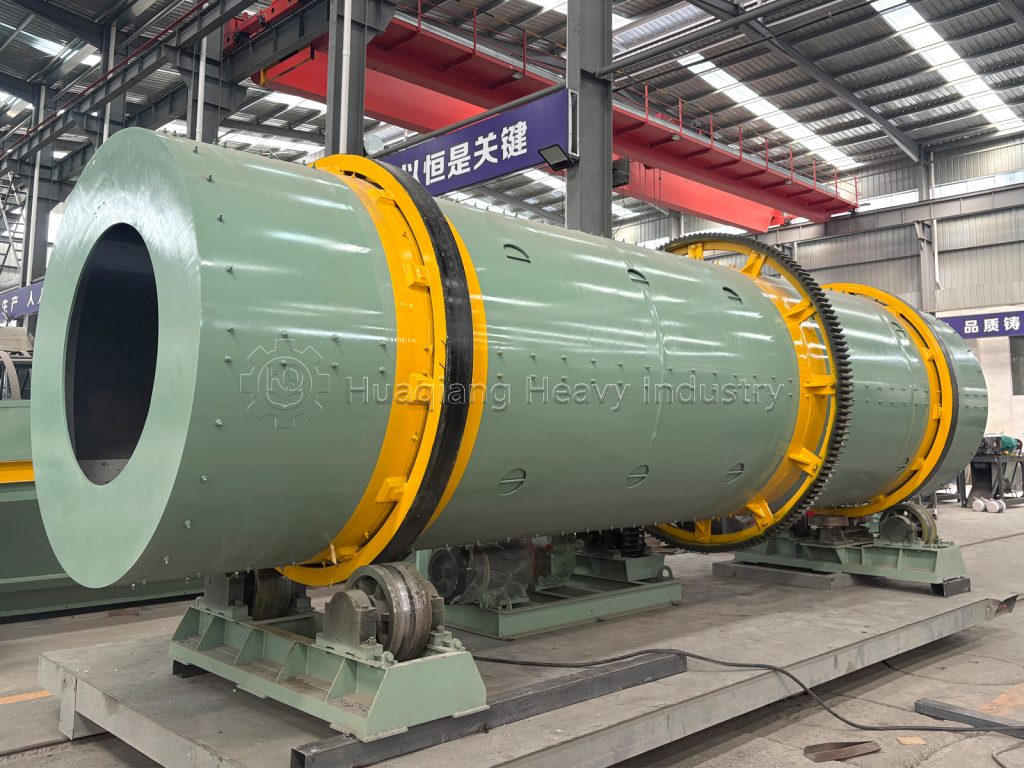As the core granulation equipment in an organic fertilizer production line, the structural design of a rotary drum granulator directly impacts granulation efficiency and product quality. Its overall design is centered around “efficient granulation, stable conveying, and adaptability to the characteristics of organic fertilizers.”
The rotary drum granulator‘s core working component is an inclined rotating drum, welded from steel plates. The inner wall is lined with a wear-resistant lining to prevent abrasion by humic acid and other components in the organic fertilizer raw materials, while also enhancing material friction to aid granulation. The drive system offers both constant and variable speed options.

The constant speed option is suitable for large-scale production with stable raw materials, while the variable speed option (8-15 rpm) can be adjusted to suit different raw materials: reducing the speed to prevent sticking when the liquid content is high, while increasing the speed to promote compact granules when the liquid content is low.The rotary drum granulator drum inclination angle is a critical parameter, typically 3-10 degrees. A too small angle causes the material to remain in the drum for too long, leading to agglomeration or oversized granules. A too large angle results in rapid material flow, insufficient granulation time, and loose granules. A 50-100mm high retaining ring is installed at the feed end to prevent loose powder from flowing back. The height of the retaining ring at the discharge end is adjustable. It can be raised to extend retention time when larger pellets are needed, and lowered or replaced with a spiral discharge ring for faster discharge. The blade angle matches the rotational speed, ensuring a uniform feed to the screen and preventing clogging.
The integrated cylindrical screen is key to finished product screening. Its aperture is customized to meet organic fertilizer requirements (2-5mm). Rotating synchronously with the drum, qualified pellets are discharged while unqualified, large particles are returned for reprocessing, achieving an integrated “granulation-screening” process. The flexible binder injection system allows for pre-injection, suitable for highly absorbent raw materials such as straw. Instantaneous injection allows for precise moisture control to prevent over-wetting. Both methods are equipped with metering pumps to ensure precise dosage (10%-15% of the total raw material) and guarantee pellet formation efficiency.